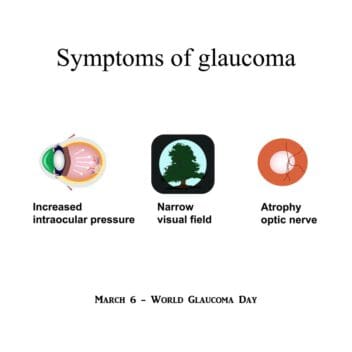
Medically Reviewed by Philina Yee, M.D. NVISION Surgeon
Is There a ‘Cure’ for Glaucoma? (Modern Treatment Options)
Home / Diagnosed With Glaucoma /
Last Updated:

Medically Reviewed by Philina Yee, M.D. NVISION Surgeon

Article At a Glance
There’s currently no cure for glaucoma, but early diagnosis and consistent treatment can help protect your vision. This article explains how glaucoma causes gradual vision loss—often without symptoms—and emphasizes why regular eye exams are key. Treatment focuses on lowering eye pressure using medications, laser therapy, or surgery. While damage from glaucoma can’t be reversed, many patients maintain good vision for life with proper care. Staying on top of treatment and follow-ups is your best defense against vision loss.
Table of Contents
Glaucoma is a leading cause of blindness with no known cure. Unfortunately, its effects cannot be reversed. Managing glaucoma requires lifelong medical care.
The good news is that with proper treatment, the effects of glaucoma can be mitigated and the disease’s progression can be slowed. Treatment options for glaucoma typically include eye drops, laser surgery, conventional surgery, or a combination of these approaches. Each has its own benefits and risks; your doctor can help determine the best course of action for your eyes.
What Is Glaucoma?

With each blink, your eyes adjust fluid levels. New fluid comes in, and old fluids are recycled. When the system breaks, fluids build up within the eye. Pressure rises, and the optic nerve is compressed. In time, this can compromise your vision.
Glaucoma is the second leading cause of blindness globally, says the Centers for Disease Control and Prevention. The disease is dangerous because:
You deserve clear vision. We can help.
With 135+ locations and over 2.5 million procedures performed, our board-certified eye surgeons deliver results you can trust.
Your journey to better vision starts here.
- It is painless. We often use pain to warn us that something has gone wrong in our bodies. In the early stages, glaucoma does not hurt at all.
- It is gradual. You will not wake up one morning and discover that your sight is gone. Instead, you will lose it in small steps that are easy to ignore.
- It is permanent. The sight you lose due to glaucoma will not come back.
Early glaucoma treatment is critical, as it can help you preserve what you have without losing yet more eyesight. Thanks to advances in treatment, glaucoma no longer means blindness for most people. But even with treatment, glaucoma can have serious consequences.
According to the Glaucoma Research Foundation, about 10 percent of people who get glaucoma treatment still experience vision loss.
How Is Glaucoma Treated?
The goal of glaucoma treatment is to amend the fluid imbalance within your eyes. When your eyes can drain properly, the pressure drops. That allows your optic nerve to escape further damage, so you will not lose any more vision.
Frontline treatment for glaucoma involves eye drops. Many different versions exist, including:
- Alpha-adrenergic agonists.
- Beta blockers.
- Carbonic anhydrase inhibitors.
- Cholinergic agents.
- Prostaglandins.
- Rho kinase inhibitors.
Most of these drops work by either increasing outflow of liquids or reducing fluid production. You will use them at least once, if not several, times each day. You can’t skip a dose, or severe symptoms can return.
Glaucoma eye drops can cause side effects, says the American Academy of Ophthalmology, including:
- Blurry vision.
- Changes in pulse and heartbeat.
- Energy level changes.
- Dry mouth.
- Itchiness around the eyes.
- Eye redness.
- Stinging sensations.
If you are struggling with side effects from one type of drop, another may be a better option for you. Talk to your doctor before stopping or modifying any treatment for your glaucoma.
If you can’t tolerate drops, your doctor might recommend laser trabeculoplasty. Your surgeon uses a laser to optimize how well your eye drains, and if it’s done properly, you may not need eye drops. This is not a cure for glaucoma, as the effect can wear off and require another surgery. But it could be a good option for those who just can’t handle medication management.
Another option for glaucoma treatment is the newly FDA-approved iDose TR, which provides continuous, around-the-clock medication adherence. This 24/7 adherence eliminates the need to remember daily doses or worry about missed applications, making it easier to maintain stable eye pressure at all times.
Conventional surgery is also an option for people with glaucoma. Surgeons implant shunts to improve drainage, or they snip away at the bits that are blocking drainage channels.
The Glaucoma Research Foundation says only 11% of people with glaucoma choose surgery. The rest use drops or lasers instead. But surgery can be helpful for some people who do not benefit from those other forms of care.
Sometimes, people can manage their glaucoma with conservative means like eye drops for years before symptoms worsen. At that point, an ophthalmologist may recommend laser or traditional surgery.
Innovations in Glaucoma Treatment

One area that shows promise for innovative glaucoma treatment is gene therapy. Researchers from the University of Bristol Medical School conducted a study showing that sight-deterioration from glaucoma could be improved with gene therapy.
The team employed CRISPR gene editing to inactivate the Aquaporin 1 gene in the ciliary body, which generates fluid to maintain normal eye pressure. The result was reduced IOP. While this is still not a cure for glaucoma, the researchers are collaborating with industry partners to move towards clinical trials soon.
Researchers at the Harvard Medical School also manipulated retinal cells to recapture youthful gene function and restore vision in mice. This was the first successful reversal of glaucoma-induced vision loss and glaucoma damage.
Most other treatments seek to stem its progression. This gene therapy may reverse cell aging successfully and potentially revolutionize eye treatment. Clinicians are hopeful to begin clinical trials soon if further animal testing confirms research findings.
In 2020, the U.S. Food and Drug Administration (FDA) approved the first biodegradable intracameral sustained-release implant for DURYSTA (a prostaglandin analog) from Allergan plc. The new drug application (NDA) reduces IOP in patients with ocular hypertension and open-angle glaucoma. It is an important breakthrough, offering a viable option for people who have problems with topical eye drops.
You deserve clear vision. We can help.
With 135+ locations and over 2.5 million procedures performed, our board-certified eye surgeons deliver results you can trust.
Your journey to better vision starts here.
At-Home Glaucoma Treatments

There are plenty of things you can do at home to help address your glaucoma. You can use your eye drops, for example. Unfortunately, there are no DIY or ‘at-home’ treatments that can cure glaucoma.
Experts agree that a diet rich in fruits and vegetables is beneficial for overall health, including for those with glaucoma, but there is no specific diet to control the condition, and claims of a food-based “glaucoma cure” are unfounded.
Exercise could be helpful as you work on your glaucoma. The Glaucoma Research Foundation says, for example, that people walking briskly four times per week for 40 minutes per session reduced eye pressure enough to eliminate the need for one type of medication.
But some types of exercise, including some yoga poses, could be dangerous for people with glaucoma. Make sure you are breathing evenly and deeply while you exercise, as holding your breath puts pressure on your eyes.
It’s smart to talk with your doctor about your exercise plans before you begin a new exercise regimen or diet.
Is a Cure for Glaucoma Possible?
Although there is currently no current cure for glaucoma, ongoing research offers hope for the future. The National Glaucoma Foundation notes that advancements aimed at restoring vision may take years to develop, as the work is both complex and time-intensive. Nonetheless, progress is being made.
In the meantime, it’s essential to maintain regular communication with your doctor. Adhere to prescribed treatments and discuss any concerns or changes in your condition to ensure your care remains effective.
Significant strides have been made in managing glaucoma. Early diagnosis and timely treatment can dramatically slow its progression and reduce the risk of severe vision loss. Regular eye exams are crucial for achieving the best possible long-term outcome.
You deserve clear vision. We can help.
With 135+ locations and over 2.5 million procedures performed, our board-certified eye surgeons deliver results you can trust.
Your journey to better vision starts here.
References
- Do Not Let Glaucoma Steal Your Sight! (December 2018). Centers for Disease Control and Prevention.
- Glaucoma Facts and Stats. (October 2017). Glaucoma Research Foundation.
- Glaucoma. (February 2018). MedicineNet.
- Glaucoma Overview. (February 2018). National Health Service.
- Glaucoma Treatment. (August 2019). American Academy of Ophthalmology.
- Six Questions to Ask Before Starting Glaucoma Treatment. (June 2018). BrightFocus Foundation.
- Advances in Glaucoma Treatment. (May 2018). Duke Eye Center.
- Study Advances Gene Therapy for Glaucoma. (January 2018). ScienceDaily.
- Exciting New Treatments for Glaucoma. (February 2015). University of Utah.
- The Path to a Cure for Glaucoma. Glaucoma Research Foundation.
- Glaucoma Surgery Series: Minimally Invasive Glaucoma Surgeries (MIGS). (November 2018). BrightFocus Foundation.
- New Medication Delivery Systems for Glaucoma. (December 2019). Glaucoma Research Foundation.
- What Vitamins and Nutrients Will Help Prevent My Glaucoma From Worsening? (July 2018). Glaucoma Research Foundation.
- Alternative Medicine. (March 2016). Glaucoma Research Foundation.
- Can Glaucoma Be Cured? (July 2019). Glaucoma Research Foundation.
- Gene Therapy for Glaucoma by Ciliary Body Aquaporin 1 Disruption Using CRISPR-Cas9. (March 04, 2020). Molecular Therapy.
- Scientists reverse age-related vision loss, glaucoma damage in mice. (December 2020). Harvard Medical School.
- Allergan Receives FDA Approval for DURYSTA (bimatoprost implant) the First and Only Intracameral Biodegradable Sustained-Release Implant to Lower Intraocular Pressure in Open-Angle Glaucoma or Ocular Hypertension Patients. (March 2020). CISION PR Newswire.

Dr. Yee is a glaucoma specialist trained in the medical and surgical management of glaucoma. She also provides comprehensive ophthalmological services for adolescents and adults.
This content is for informational purposes only. It may have been reviewed by a licensed physician, but is not intended to serve as a substitute for professional medical advice. Always consult your healthcare provider with any health concerns. For more, read our Privacy Policy and Editorial Policy.

